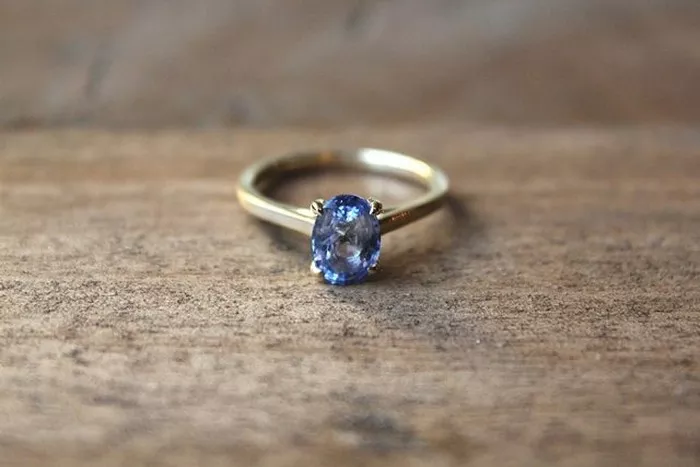Sapphire, a gemstone that has fascinated humans for thousands of years, holds a unique place in the world of jewelry. Its rich history, intricate properties, and diverse uses make it a truly remarkable gem. Here, we explore 5 fascinating facts about sapphire from a professional jewelry appraiser’s perspective.
A Member of the Corundum Family
Sapphire, along with its more famous cousin ruby, belongs to the corundum family of minerals. Corundum is a crystalline form of aluminum oxide (Al₂O₃) and is known for its hardness, ranking a 9 on the Mohs scale of mineral hardness—second only to diamond. This hardness contributes to sapphire’s durability, making it a popular choice for jewelry that can withstand daily wear and tear.
Sapphire’s defining characteristic, however, lies not in its hardness but in its color. While ruby is specifically defined as corundum with a dominant red hue, sapphire encompasses all other colors of corundum. This means that sapphires can be found in a wide array of colors, including blue, green, yellow, orange, purple, pink, and even black (though true black sapphires are rare and highly valued).
The Iconic Blue Sapphire
When most people think of sapphire, they envision the classic blue hue. Blue sapphires derive their color from trace amounts of titanium and iron within the mineral’s crystal structure. The intensity and tone of the blue can vary greatly, ranging from a pale sky blue to a deep, velvety indigo.
One of the most famous blue sapphires is the “Star of India,” a stunning 563.35-carat gemstone housed in the American Museum of Natural History. This sapphire exhibits a phenomenon known as asterism, where tiny, parallel needle-like inclusions within the gemstone create a six-rayed star when viewed under certain lighting conditions. Asterism is a rare occurrence and significantly enhances the value of the sapphire.
Kashmir, Myanmar (formerly Burma), and Sri Lanka are renowned for producing the finest blue sapphires. These regions’ unique geological conditions contribute to the production of sapphires with exceptional color saturation and clarity.
Symbolism and History
Sapphire has a rich history steeped in symbolism and lore. Throughout ancient civilizations, sapphire was believed to possess protective qualities. In ancient Greece and Rome, it was associated with the gods and was thought to bring wisdom, good fortune, and protection from harm. During the Middle Ages, sapphire was believed to guard against poisoning and to have healing powers.
In royal circles, sapphire has been a favorite gemstone for centuries. The British royal family, in particular, has a long history with sapphire jewelry. Queen Victoria, for example, was known for her love of sapphires, and the sapphire engagement ring she wore inspired a trend that continues to this day. Princess Diana’s iconic sapphire engagement ring, which was later inherited by Catherine, Duchess of Cambridge, further cemented the gemstone’s status as a symbol of love and commitment.
Treatments and Enhancements
Many sapphires undergo some form of treatment or enhancement to improve their appearance. The most common treatment is heating, which can alter the color of the gemstone, making it more vivid or intense. Heating is a widely accepted practice in the gemstone industry and is generally considered permanent and stable.
Other treatments, such as diffusion or fracture filling, are less common but can also be used to enhance sapphire’s appearance. Diffusion involves introducing color-causing elements into the gemstone through high-temperature processes, while fracture filling involves filling cracks or inclusions with glass or resin to improve clarity. While these treatments can enhance the gemstone’s appearance, they may also affect its durability and value.
As a jewelry appraiser, it is crucial to be able to identify whether a sapphire has been treated and, if so, what type of treatment was used. This information is critical for accurately assessing the gemstone’s value and informing potential buyers.
Sustainability and Ethical Sourcing
In recent years, consumers have become increasingly concerned about the sustainability and ethical sourcing of gemstones, including sapphires. Many sapphires are mined in regions where labor conditions may be poor, and environmental practices may be lacking. This has led to a growing demand for sapphires that are responsibly sourced and produced.
Certification is one way to ensure that a sapphire has been ethically sourced. Gemological laboratories such as the Gemological Institute of America (GIA) and the American Gemological Society (AGS) offer certification services that verify a gemstone’s origin, treatment history, and quality characteristics. By purchasing a certified sapphire, consumers can have greater confidence in the gemstone’s authenticity and ethical sourcing.
In addition to certification, consumers can also choose to support mining operations that prioritize responsible practices. Many miners and gemstone cutters are now adopting more sustainable and environmentally friendly methods, such as recycling water and reducing waste. By supporting these operations, consumers can help drive positive change in the gemstone industry.
Conclusion
Sapphire is a gemstone of immense beauty and historical significance. Its durability, versatility in color, and rich lore make it a favorite among collectors and jewelry enthusiasts. As a jewelry appraiser, understanding the intricacies of sapphire’s properties, treatments, and sourcing is essential for accurately assessing its value and ensuring that consumers make informed purchasing decisions. By embracing sapphire’s unique qualities and promoting responsible sourcing practices, we can continue to cherish and enjoy this remarkable gemstone for generations to come.
Related topic:
- The Allure of Radiant Cut Yellow Sapphire
- Nigerian Yellow Sapphire: A Gemstone of Distinction
- Lemon Yellow Sapphire: The Bright Gem of Optimism


